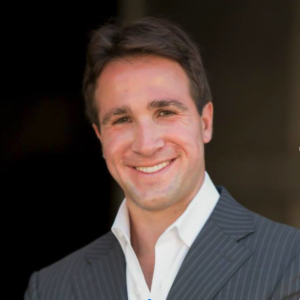Adam: Thanks again for taking the time to share your advice. First things first, though, I am sure readers would love to learn more about you. How did you get here? What experiences, failures, setbacks or challenges have been most instrumental to your growth?
Michael: My parents, who immigrated from modern-day Croatia and neither of whom graduated from high school, continually emphasized education and hard work. Those were the expectations, the norms, from a young age. I went on to earn a PhD in the psychology of human performance, play college football, and then help coach our team to a national championship — all experiences that greatly influenced me.
Early in my business career, I learned a tremendous amount from implementing strategic change at FedEx and having a boss who was both very supportive and driven to achieve results. Then, when I got into the consulting world, I continued to learn, studying the ways in which clients’ organizations were similar or different, and using that contextual knowledge as a guide to implementing strategic change. All of these experiences prepared me well for what I currently do as a strategy + execution consultant.
Adam: In your experience, what are the defining qualities of an effective leader? How can leaders and aspiring leaders take their leadership skills to the next level?
Michael: First, to be an effective leader, you have to realize that it’s not about you, it’s through you. You can’t be successful unless your team is successful. Which means that your role is to help your team succeed.
Next — and this took me a while to learn — is that if you connect with the heart, the head will follow. When your team members know that you respect them, trust them, and care about them as individuals, you engage them. It turns out that when you treat people as people first, employees second, they become better employees.
As a leader, it’s also important to be a coach, not just a manager. Coaches take responsibility for the performance of their people. Coaches ask, “What do I need to do to help each team member perform at his or her best?” Coaches understand that different approaches have different effects on different team members. As a result, great coaches are adaptable.
Finally, effective leaders focus not just on being effective, but on continually becoming more effective. It’s a process; there is no end-point. It’s about continually learning, improving, and getting stronger.
Adam: What is Ruthless Consistency all about? What would you like leaders to take away from your book?
Michael: According to Harvard Business Review, 60-70% of strategic change initiatives fail. Worse, that failure rate has remained constant since the 1970’s. The big question, of course, is “Why?”
In Ruthless Consistency, I explain why most strategic change initiatives fail, provide a comprehensive yet intuitive model for what to do about it, and then equip leaders with models, processes, practices and tools to make it happen. The book details — with lots of examples from a wide range of fields — how leaders can consistently develop the right focus, create the right environment, and build the right team to enable their organizations to win.
What do I want leaders to take away from the book? Two things. First, I want to make them uncomfortable by bringing them face-to-face with what they haven’t done but need to do to be successful. Next, I want them feeling equipped and inspired to take the necessary steps to turn their ambitions into strategy, and strategy into reality.
Adam: What tips do you have for leaders on how to effectively manage change and how to effectively lead their organizations through meaningful changes? What are the most common pitfalls and how can we overcome them?
We need to challenge some of the assumptions we have about organizational change. First, is the idea that people resist change. People don’t resist change so much as they resist uncertainty. It’s rational for them to think: Will I like the change or not? Will I be good at it or not? Will I be more secure in my job or less secure? Uncertainty makes people anxious, and anxiety leads to resistance. That’s why it’s critical for leaders to overcommunicate during times of change. They need to overcommunicate what is changing, how it will change and, most importantly, why. And overcommunicating can’t just be one-way. Leaders need to engage people in the conversation, getting reactions, input and questions re the pending change.
The next assumption we need to challenge is the idea that we have to get everyone on-board. This leads some managers to spend more time trying to convince the nay-sayers than working with the proponents of change. You don’t need to get everyone on board. What you need is critical mass. Actively support and reinforce those most eager for change. Then trumpet their successes to help get the masses on-board. That isolates the nay-sayers. Now, either they get with the program or they may not fit with the program.
The third assumption is that if we simply “tell ‘em and train ‘em” then people will change. Yes, communications and training are important, but they’re not enough. We need to make sure everything points people in the direction of change. Beyond communications and training, we need to align critical elements such as resources, authority, measurement, feedback, guidance, reinforcement, and accountability. Any one of those, misaligned, could undermine the change we want to implement. That’s why tell ‘em and train ‘em isn’t enough.
Adam: What are your three best tips applicable to entrepreneurs, executives and civic leaders?
Every organization takes on too much. Too many strategies, too many objectives, too many initiatives, too much. When you take on too much, inevitably some of those things will fail. Do this repeatedly, and you create an expectation of failure, an acceptance of failure, and even a culture of failure. If there is one thing I would sear into the brain of every leader, it’s this: do less. Do less, do less, do less. Focus on the critical few things that absolutely must get done, concentrate your efforts, and then expect results.
The second tip is to approach strategy as a process, not an event. Stop strategic planning. Strategic planning places the emphasis on the plan or the exercise of creating a plan. Yet too many plans either get sidetracked by the urgencies of the day-to-day, or else they sit on a shelf and collect dust. Far better to embrace strategic management, an ongoing and cyclical process that emphasizes strategy execution, not just strategy development.
Finally, is to recognize the importance of context. What works in one situation may not work in another. What appeals to one market segment may not appeal to another. What engages some team members may not engage others. Look for patterns, look for trends, but be sensitive to the importance of context when making decisions.
Adam: What is your best advice on building, leading and managing teams?
My best advice for building a winning team is to not select people simply based on their skills and experience. Often, a more reliable predictor of success is their traits. For example, are they hard-working? Driven to improve? Do they take initiative? Take responsibility? How do they deal with adversity? Skills tell you if a person can do the job. Experience tells you if a person has done the job. Traits tell you if a person will do the job.
When it comes to leading a team, I’m reminded of a John Maxwell quote, “If you think you’re leading, but no one if following, then you’re only taking a walk.” Leadership isn’t about the leader. Leadership is about enabling and inspiring a capable team to achieve what you need them to achieve. It’s about what they think, what they feel, and what they do.
As for managing a team, I can’t overstate how important it is that managers think and act like coaches. Managers who provide specific and timely feedback, helpful guidance, meaningful reinforcement, and constructive accountability, are coaches who help their people perform at their best.
Adam: How can leaders most effectively inspire and motivate their teams?
Before you think about motivating people, make sure you’re not demotivating them. And few things demotivate people more than leaders who send mixed messages, saying one thing but doing another. For example, when you point to the stars but won’t provide the rocket to get there, you’re sending a mixed message. When you give people skills but without the authority to apply them, you’re sending a mixed message. And when you trumpet excellence yet tolerate poor performance, you’re sending a mixed message. Mixed messages demotivate people, kill your credibility, and undermine your efforts.
The best way to inspire your team is to select people who are naturally driven to make a difference, to perform well, and to achieve. Then continually make clear how what each person does specifically links to your overarching purpose. Don’t focus on money as a motivator. Focus on the psychological motivators such as achievement, recognition, autonomy, belonging, and identity.
Adam: What are the key elements to building a winning company culture?
Culture is a consequence of your people and the environment in which they operate. As a leader, your job is to select the right people and create the right environment.
A winning culture is one of engagement and performance. Why both? Because engagement without performance is a country club. Performance without engagement is a sweatshop. Engagement and performance reflects a winning organization.
In our Engagement-Performance Model we focus on five major elements: align, equip, coach, support, and value. We need to align people’s hearts and minds with what we intend to achieve. We need to equip them, setting them up to succeed not to fail. We need to coach them, regularly providing them with feedback and guidance, reinforcing them and holding them constructively accountable. We need to design the organization — processes, policies, structure and infrastructure — to support them. And we need to value them, demonstrating respect, trust and caring to connect with them at a human level. Collectively, doing all of these builds a culture of engagement and performance.
Adam: What is the single best piece of advice you have ever received?
Many years ago I was at a football coaches conference and one of the speakers was Lou Holtz. Holtz is a legendary coach who won a national championship at Notre Dame and who also led six different college teams to bowl games, the only coach ever to do that. Being a young coach at the time, I was of course eager to learn as much as I could from this icon of the sport.
Towards the end of his talk, Holtz said something that instantly reframed how I thought about coaching:
“The best players don’t always make the best team, but the best team almost always wins.”
It takes a team. Throughout my career, that view has been reinforced again and again. Yes, you want to secure top talent. Yet we’ve all seen when talented people don’t produce the intended results because they don’t function as a team.
We can’t leave it to chance. We need to define what being a good team member looks like and then test and evaluate it when selecting team members. It needs to be a part of each person’s job expectations and part of the performance management process. The bottom line is that you don’t want a team of talented individuals, you want a talented team.









